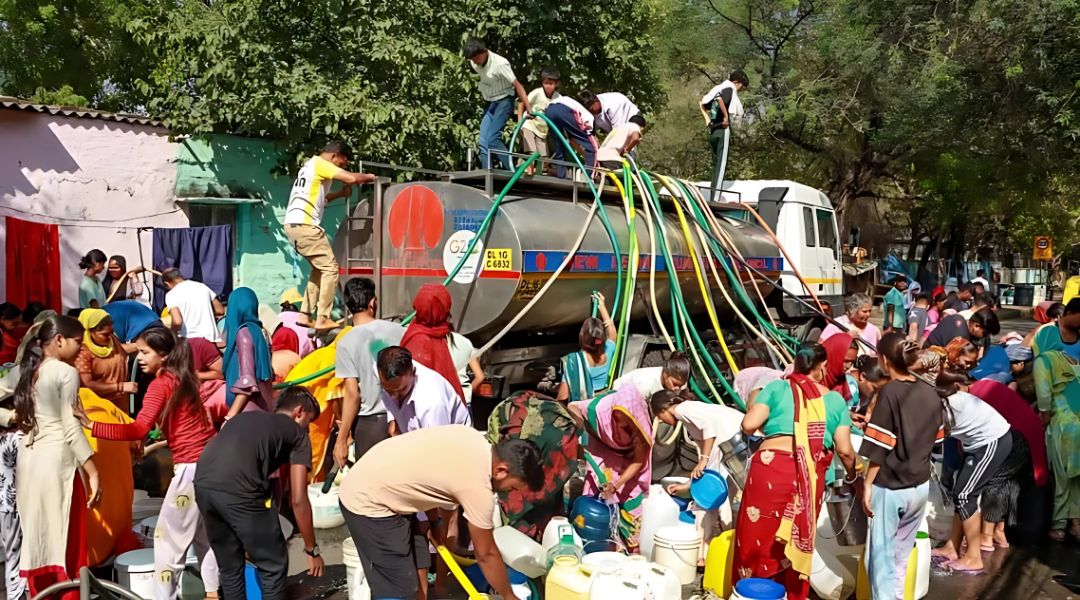
Introduction
Delhi, India’s capital, is facing an acute water crisis compounded by rising temperatures and strained resources. With the temperatures touching unprecedented highs and neighboring states withholding Delhi’s entitled share of water, urgent action is imperative. Let’s explore the depths of Delhi’s water crisis and examine how innovative solutions, such as Akvo’s Atmospheric Water Generators (AWGs), can offer sustainable relief amidst the drought-stricken landscape.
The Severity of Delhi’s Water Crisis
Delhi finds itself in the grip of a severe water shortage, made worse by scorching temperatures and depleting water resources. The city’s reliance on neighboring states like Haryana and Uttar Pradesh for water supply further complicates the situation. With Haryana failing to release Delhi’s share of water since May 1, the crisis has reached critical levels, prompting discussions of legal recourse and urgent conservation measures.
Challenges and Impacts
The water crisis has far-reaching consequences for Delhi’s residents, businesses, and infrastructure. Rationed water supply, dwindling groundwater levels, and the looming threat of fines for wasteful practices like using hoses to wash cars underscore the severity of the situation. As temperatures rise and water scarcity deepens, the need for immediate intervention becomes increasingly urgent.
How AWGs Can Help Overcome the Crisis
In the face of Delhi’s water crisis, innovative solutions are imperative to alleviate strain on existing water sources and provide sustainable alternatives. Akvo’s Atmospheric Water Generators (AWGs) offer a promising solution by extracting moisture from the air and converting it into clean, drinkable water. This technology operates efficiently even in arid climates, making it well-suited to address Delhi’s water scarcity challenges.
The Akvo AWG machines can be deployed across the city to supplement existing water sources and alleviate pressure on strained infrastructure. By harnessing atmospheric moisture, AWGs offer a sustainable, cost-effective, future-proof solution to Delhi’s water woes.
Conclusion
Delhi’s water crisis demands urgent action and innovative solutions to ensure the well-being of its residents and the sustainability of its resources. Akvo’s Atmospheric Water Generators present a beacon of hope amidst the crisis, offering a promising pathway towards water resilience and security. As authorities, businesses, and communities come together to tackle the crisis, embracing innovative technologies like AWGs can pave the way for a more sustainable future for Delhi and beyond.
